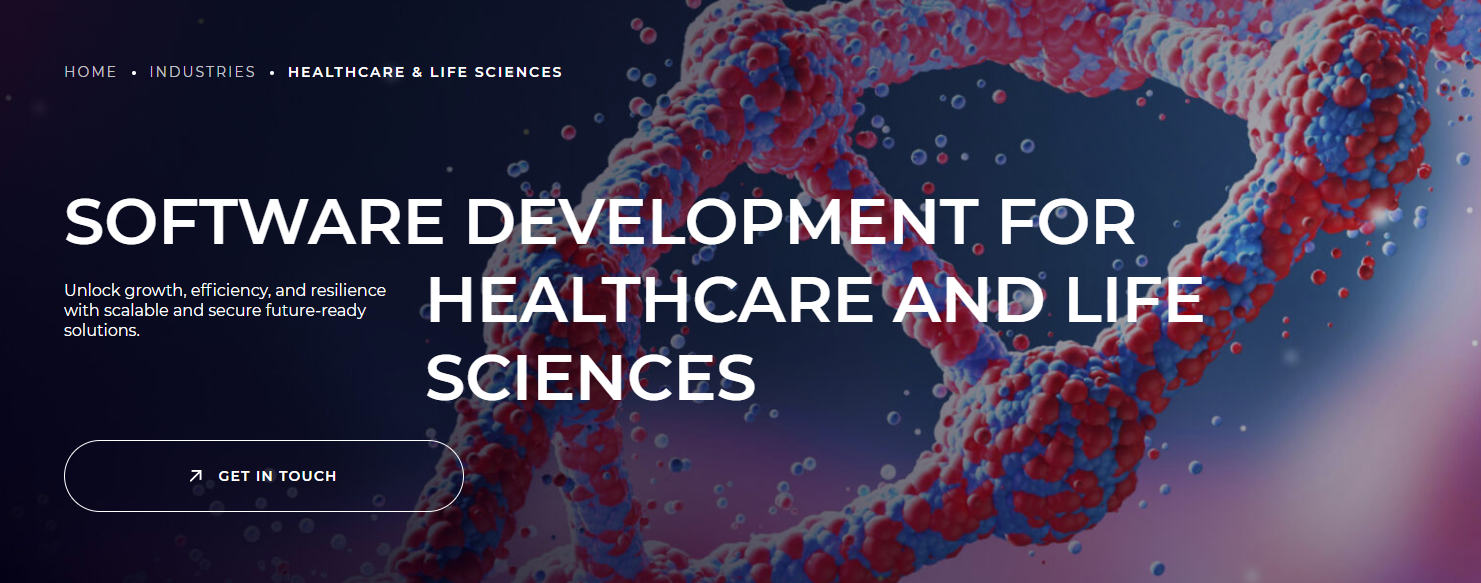
Integrating Medical Devices with Healthcare Applications: Challenges & Solutions
In today’s fast-paced, technology-driven healthcare environment, integrating medical devices with healthcare applications is no longer optional — it is a necessity. From wearable fitness trackers and glucose monitors to hospital-grade imaging machines and remote patient monitoring devices, medical technology is generating vast amounts of data that, if connected to healthcare software systems, can transform patient care. However, the road to seamless integration is filled with challenges, from technical and regulatory barriers to cybersecurity risks and interoperability concerns.
This article explores the challenges of medical device integration, highlights innovative solutions, and explains how organizations like Zoolatech help healthcare companies design robust and scalable systems for better patient outcomes.
The Growing Need for Medical Device Integration
The healthcare industry is undergoing a digital transformation. Telemedicine, remote patient monitoring, and value-based care models are placing unprecedented emphasis on real-time access to patient data. Traditionally, patient information has been siloed across multiple systems — electronic health records (EHRs), laboratory information systems, imaging platforms, and medical devices themselves.
When these systems do not “talk” to each other, providers face delayed decision-making, duplication of tests, and fragmented care. Integration of medical devices with healthcare applications bridges this gap by ensuring that data flows automatically and securely between devices, apps, and provider systems.
The benefits of integration include:
Real-time data access – Vital signs, lab results, and device-generated alerts are available instantly.
Improved patient outcomes – Faster intervention when abnormal readings are detected.
Operational efficiency – Reduced manual data entry, fewer errors, and streamlined workflows.
Enhanced patient engagement – Patients can track their own progress through apps connected to their devices.
Key Challenges in Medical Device Integration
While the benefits are clear, integrating devices with healthcare applications is far from straightforward. Below are the most common challenges healthcare organizations face.
1. Interoperability Issues
Medical devices often come from different manufacturers, each using proprietary data formats and communication protocols. This lack of standardization makes it difficult to create a unified system where all devices can send and receive data seamlessly.
For example, a heart monitor may output data in HL7 format, while a wearable glucose sensor might use a custom API or Bluetooth communication. Creating a common language for these devices is one of the largest hurdles in integration.
2. Regulatory Compliance
Healthcare is one of the most highly regulated industries. Integrating devices means handling sensitive patient data, which must comply with regulations like:
HIPAA (USA) – Ensures patient privacy and secure data handling.
GDPR (EU) – Governs data protection and consent for European patients.
FDA Requirements – For software as a medical device (SaMD) and device interoperability.
Each regulation has its own requirements for data encryption, access control, and audit trails, making compliance a significant challenge for developers.
3. Cybersecurity Risks
As more devices connect to hospital networks and cloud platforms, the attack surface for cybercriminals expands. A hacked infusion pump or compromised patient monitor could pose life-threatening risks.
Healthcare data breaches are costly — both financially and reputationally. Protecting data in motion (when being transmitted) and at rest (when stored) is critical.
4. Data Accuracy and Reliability
Medical devices must deliver precise data, as clinical decisions depend on it. Integrators must account for:
Device calibration and maintenance
Data latency (especially in remote monitoring)
Ensuring redundancy in case of network outages
A single inaccurate reading can lead to misdiagnosis or inappropriate treatment.
5. Scalability and System Performance
Hospitals and health systems often need to support thousands of devices simultaneously. As organizations scale up, integration platforms must handle increased data loads without slowing down. Poorly designed systems can result in delays, downtime, or system crashes during peak usage.
Solutions for Effective Integration
Despite the challenges, robust solutions exist to make medical device integration feasible, secure, and scalable.
1. Standardization of Data Formats
The adoption of industry-wide interoperability standards is a crucial first step. Common standards include:
HL7 / FHIR (Fast Healthcare Interoperability Resources) – A modern standard that uses RESTful APIs to make health data exchange easier.
DICOM – Widely used for medical imaging data.
IEEE 11073 – Designed for medical device communication.
By leveraging these standards, developers can reduce complexity and ensure compatibility across devices and systems.
2. Use of Middleware Integration Platforms
Middleware acts as a translator between devices and applications. These platforms collect data from multiple devices, normalize it, and deliver it to EHRs or other healthcare apps in a standardized format.
Benefits of middleware include:
Simplified integration for developers
Easier device onboarding
Centralized monitoring and management
3. Secure API Development
Application Programming Interfaces (APIs) allow different software systems to communicate effectively. Building secure, well-documented APIs ensures that data flows safely between devices and healthcare applications.
Key security measures include:
OAuth 2.0 and token-based authentication
End-to-end encryption of all data transmissions
Role-based access control to prevent unauthorized use
4. Cloud-Based Solutions
Cloud infrastructure provides scalability and flexibility. Cloud-native integration platforms can handle large data volumes, provide built-in redundancy, and support analytics and machine learning applications for predictive healthcare.
Cloud also simplifies remote monitoring solutions, enabling care teams to track patient data from anywhere.
5. Rigorous Testing and Validation
Before deployment, integrated systems should undergo:
Interoperability testing with all connected devices
Security penetration tests to identify vulnerabilities
Load testing to ensure performance under real-world conditions
Validation ensures the system is reliable and compliant with regulatory requirements.
Role of Custom Healthcare Software Development
Every healthcare organization has unique workflows and device ecosystems. Off-the-shelf solutions may not always address these specific needs. That’s where healthcare software solutions development becomes critical.
Custom development enables organizations to:
Build tailored integration workflows that match clinical processes
Ensure compliance with relevant regulatory frameworks
Create intuitive dashboards and user interfaces for care teams
Optimize system performance for large-scale deployments
Companies like Zoolatech specialize in designing and implementing these custom solutions, working closely with healthcare providers and device manufacturers to deliver secure, interoperable systems that improve patient care.
Case Study: How Integrated Systems Transform Care
Consider a mid-sized hospital implementing remote patient monitoring for chronic disease management. Before integration, nurses manually recorded patient data, often hours after collection, leading to delayed interventions.
By connecting patient devices — such as blood pressure cuffs, pulse oximeters, and glucose monitors — directly to their healthcare application, the hospital achieved:
Real-time alerts for abnormal readings, enabling rapid response
Automated documentation into the EHR, reducing administrative workload
Improved patient adherence, since patients could view their data on mobile apps
Reduced hospital readmissions, lowering overall care costs
This demonstrates the power of seamless integration in creating a connected healthcare ecosystem.
Future Trends in Device Integration
As technology evolves, we can expect even more sophisticated integration capabilities. Some emerging trends include:
Artificial Intelligence (AI) and Machine Learning (ML) – For predictive analytics, detecting anomalies, and personalizing treatment plans.
Edge Computing – Processing data locally on devices to reduce latency and improve speed.
5G Networks – Enabling faster, more reliable transmission of large data sets like imaging scans.
Blockchain for Data Security – Providing tamper-proof audit trails for patient data sharing.
These trends promise to make integrated healthcare systems even more efficient and secure in the coming years.
Integrating medical devices with healthcare applications is a complex but essential step toward delivering modern, patient-centered care. Challenges such as interoperability, compliance, security, and scalability must be addressed carefully — but with the right strategy, they are entirely surmountable.
By leveraging healthcare software solutions development, adopting industry standards, and using secure, scalable integration platforms, healthcare organizations can unlock the full potential of connected devices. Companies like Zoolatech play a crucial role in helping providers build robust systems that ensure accurate data flow, improve decision-making, and ultimately save lives.




Write a comment ...